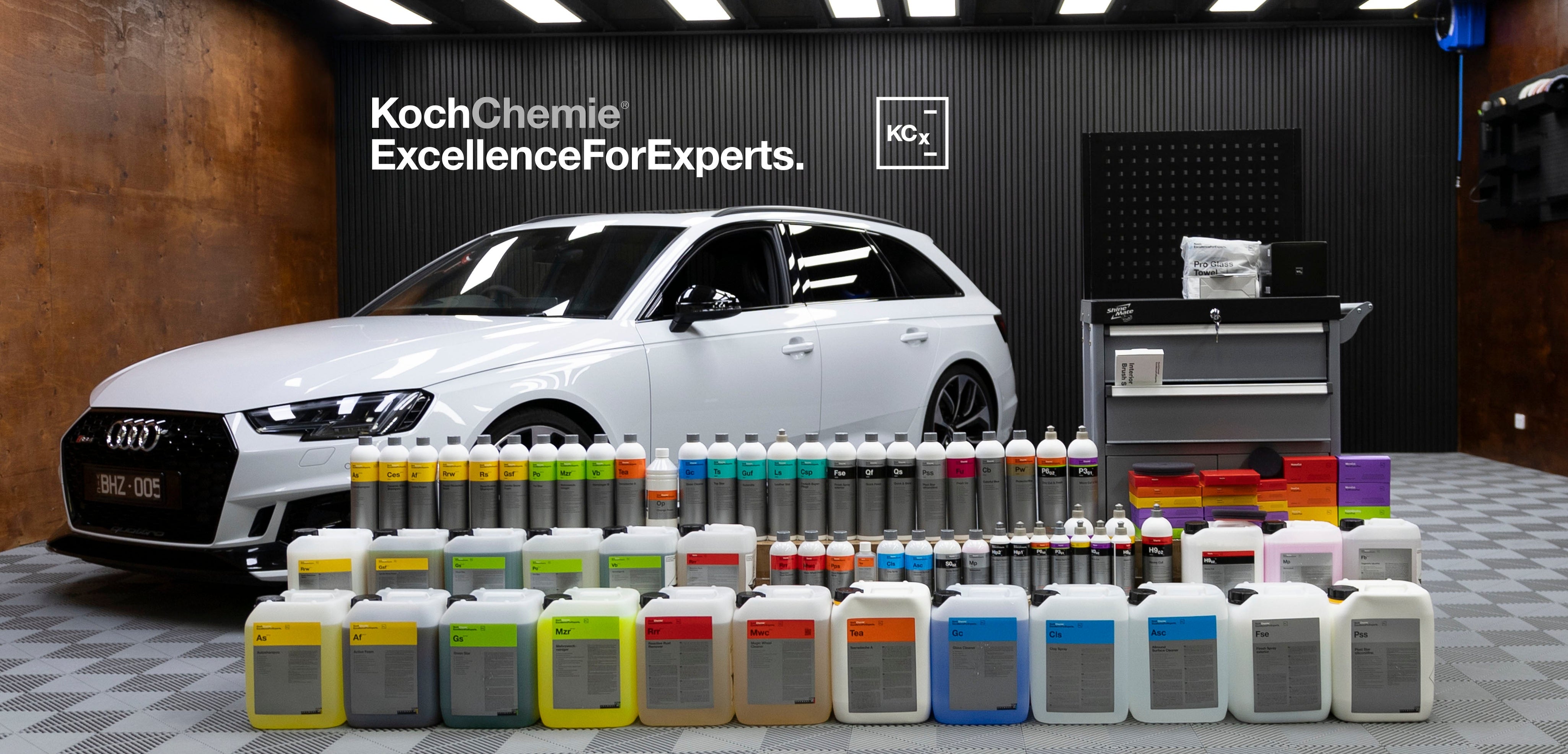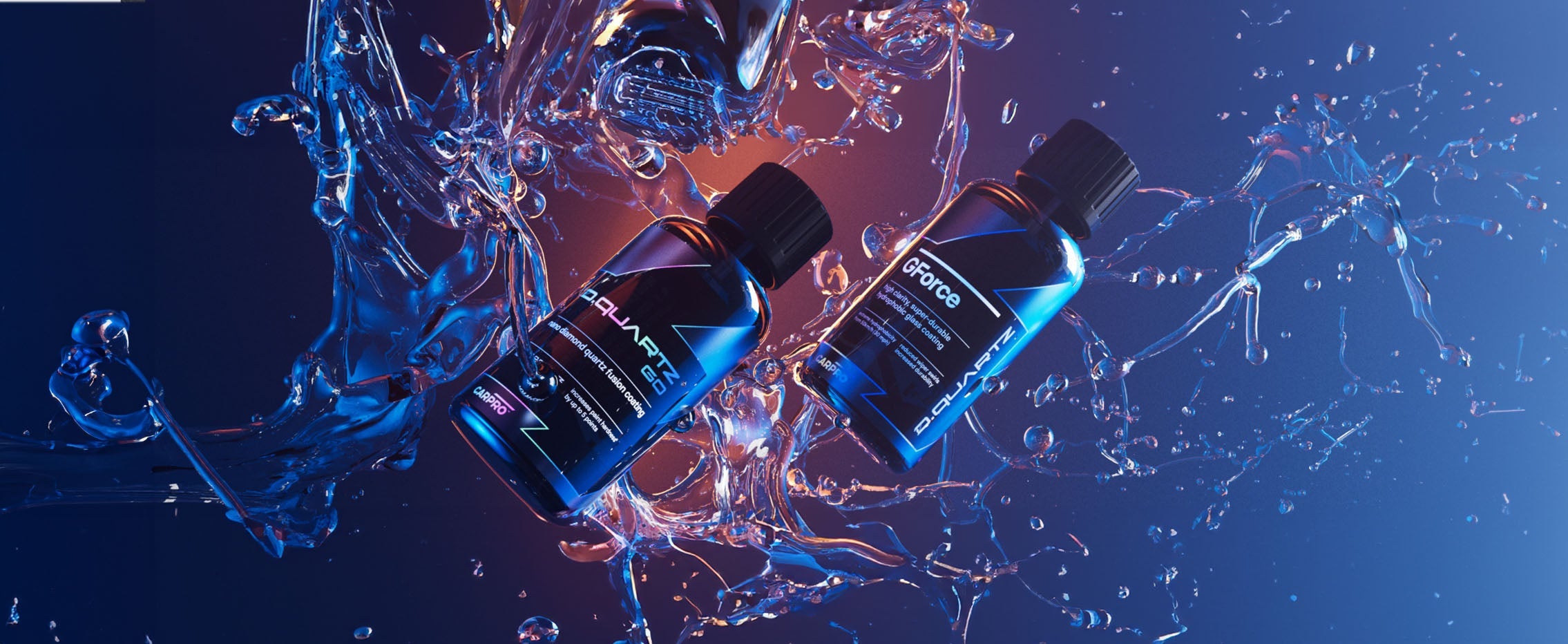Compounding and polishing automotive paint with wool and foam pads is something we’ve become accustomed to for decades now. But microfibre pads are becoming a fantastic option in the industry, but are still relatively new and are largely misunderstood and misused.
Why use microfibre pads?
Whichever way you look at it, microfibre is an extremely efficient material to work with. The real benefit of this medium is the increased surface area that microfibre pads create due to their thousands of individual microscopic fibres that are actually the finest man-made fibre in existence. So, when you translate this material and pad structure to polishing paint, you are effectively doubling and tripling the contact surface area, meaning that in many cases you’re able to achieve results twice as fast or even more so than with foam and wool pads.

The other thing about microfibre is its amazing ability to grip, hold and store most things that come in contact with. So, in the example of correcting a vehicle’s paint, microfibre pads have an increased ability to level down defects and store the compound or polish and paint residue.
How do you adapt to using microfibre pads?
A good example of understanding how to use microfibre pads can be related to taking a standard factory vehicle and increasing its horsepower. Once you increase that car’s power you need to also manage that performance by addressing things like bigger brakes, increased oil lubrication a better cooling system as well as an understanding of how to negate that performance or it may lead to catastrophic failure.
With microfibre’s increased efficiency, you need to manage that increase in performance by adapting your technique, methods and even products and tools, or it may lead to underwhelming or undesirable results. The first issue with microfibre that need to be managed are firstly heat. Microfibre generates far more heat than both wool and foam pads, so addressing that heat by minimising pressure, reducing your work time, machine speed and the amount of row passes, can greatly reduce excessive heat.

The second issue is increased and more rapid product and material removal. As mentioned before, microfibre loves to hold onto and store spent product and paint residue, so it’s vital to continuously remove that build-up, or it will massively reduce the pad's ability to perform and also lead to increased heat as the fibres become clogged and can no longer release heat and cool themselves. You will find that compressed air to blowout your pads residue is vital with microfibre pads and the more often you do this the far greater influence it will have on maintaining your pads peak performance and managing heat more so than any other factor method or technique.
What else is important to know?
The truth is that most compounds are formulated to work best with foam and wool pads, and in many cases, they struggle to make use of a microfibre pads advantages or cause issues in dealing with microfibre’s increased demands. There are a handful of compounds that actually work far better with microfibre pads which contain the increased lubrication that this material requires to minimises heat as well as allow their abrasives to shift and move during the polishing cycle to achieve more consistent results.

(ShineMate EX605 12mm DA Polisher | Lake Country Microfiber HDO Cutting Pad)
Microfibre pads should be exclusively used with dual action polishers, unlike foam and wool pads that also work well with rotary polishers. You’ll find that microfibre pads are difficult to control on single action rotary machines as the heat generation is dangerously high and the results tend to be inconsistent and overly aggressive in the way of holograms and compounding marring.
In general, when polishing or finishing paint and working on softer paint types, you’ll find that foam pads are a far better choice to achieve greater levels gloss and clarity in the paints finish.
 (ShineMate EX605 12mm DA Polisher | Scholl Concepts Pad Cleaning Brush Soft | Lake Country Microfiber HDO Cutting Pad)
(ShineMate EX605 12mm DA Polisher | Scholl Concepts Pad Cleaning Brush Soft | Lake Country Microfiber HDO Cutting Pad)
As with the many advancements in automotive detailing, microfibre pads have been a fantastic addition to this profession and hobby. But as with all newer technology, an understanding of how to approach this more unique material is vital in making use of its full potential and enjoying the benefits it can provide you with.






